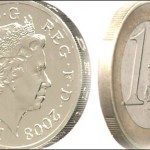Gold extended its fall in early U.S. trading on Friday as St. Louis Fed President James Bullard hinted a small taper in October is possible. Limited physical demand due to higher prices and upbeat U.S. data on Thursday also pressured the metal.
On the Comex division of the New York Mercantile Exchange, gold futures for delivery in December traded at $1 338.70 per troy ounce at 14:41 GMT, down 2.23% on the day. Prices held in range between days high and low of $1 368.40 and $1 337.20 per ounce respectively and pared its weekly advance to 0.9% following Fridays retreat.
The precious metal rose by 4.7% on Wednesday following FOMCs after-meeting statement, the biggest daily advance in 15 months, which led to a decrease in physical demand. Broad expectations pointed at a reduction of the bond purchases by between $5 and $10 billion, with some analysts projecting a $20 billion deceleration.
Bernard Sin, head of currency and metal trading at bullion refiner MKS SA in Geneva, said for Bloomberg: “Physical demand has really slowed after prices climbed. There will be quantitative-easing tapering at some point.”
Meanwhile, St. Louis Fed President James Bullard said on Friday that the Federal Reserve could still trim its monetary easing program in October if economic data lay support. “October is a live meeting,” he said for Bloomberg. “Im not saying its going to happen, but the possibility exists.”
U.S. economic data out on Thursday however backed such a vision and although gold didnt initially respond to it as market sentiment was still weighed from Wednesdays surprising news, the precious metal posted losses afterward. The U.S. Department of Labor reported that the number of people who filed for initial jobless payments last week rose by 15 000 to a seasonally adjusted 309 000. If considered as exact, the data showed a consistent increase in hiring, which would make the Fed more comfortable in trimming its bond buying program at the next FOMC meeting in October. The four-week average, which irons out weekly volatility, stood at 314 750 claims and was 5% below August’s reading.
Data by the Commerce Department showed that the U.S. current account deficit in the second quarter fell to $98.89 billion, the lowest since 2009. A separate report by the National Association of Realtors said that existing home sales in the U.S. rose to a 6 1/2-year high of 5.48 million in August, indicating persistent recovery in the housing market. The reading was the strognest since February 2007 and defied market analysts’ projections for a drop to 5.25 million from July’s 5.39 million homes sold.
Also on Thursday, the Philadelphia FED Index, which tracks the manufacturing activity in the region, exceeded economists’ projections for a surge to 10.0 from July’s 9.3 and rose to 22.3. At the same time, the U.S. Leading Indicators index also surpassed expectations for a 0.6% advance and rose by 0.7% in August after adding 0.6% in the preceding month.
Despite the upbeat data, Fed officials made it clear that there is no fixed schedule for tapering amid worries that that the rising borrowing costs were showing signs of slowing the four-year expansion of the U.S. economy.
“Rates went up a lot over the summer,” Bullard said. “For many on the committee that was a surprise.” Data showed on Tuesday that consumer inflation still remained well below Feds target at 2%, leaving extra room for monetary stimulus.
A Bloomberg survey showed that gold traders were most bullish in three weeks after Feds decision to leave the pace of bond purchasing unchanged. According to the poll, sixteen out of 26 analysts wagered that prices will advance next week, while five anticipated a decline and the remaining five were neutral.
Jeff Sica, who helps oversee more than $1 billion as the president of Sica Wealth Management in Morristown, New Jersey, said for Bloomberg: “The Fed has realized that any attempt to reduce or eliminate quantitative easing will lead to a surge in interest rates. There will be ongoing currency devaluation both in the U.S. and around the world. I anticipate significant fundamental strength in the price of gold in the near term.”
Assets in the SPDR Gold Trust, the biggest bullion-backed ETP, rose to 912.00 tons after remaining unchanged for three days at 911.12 tons, data on the web site showed.





